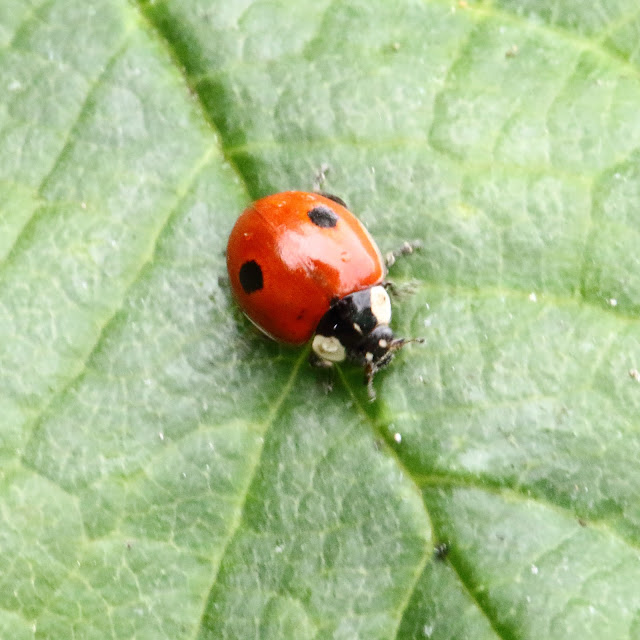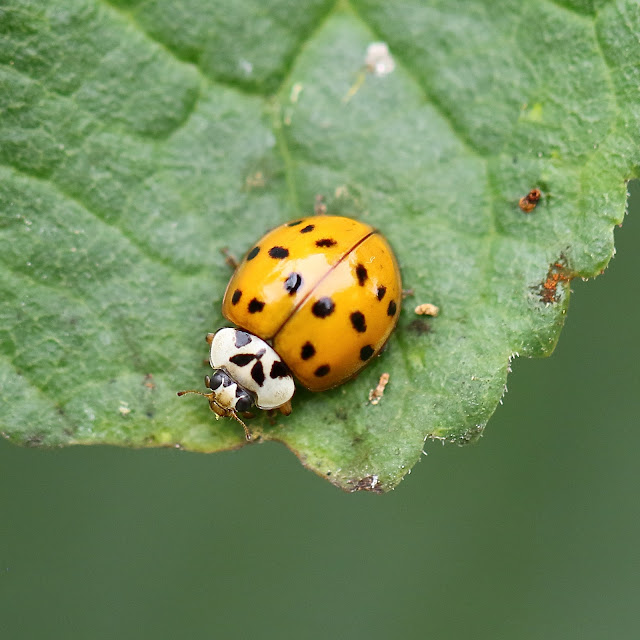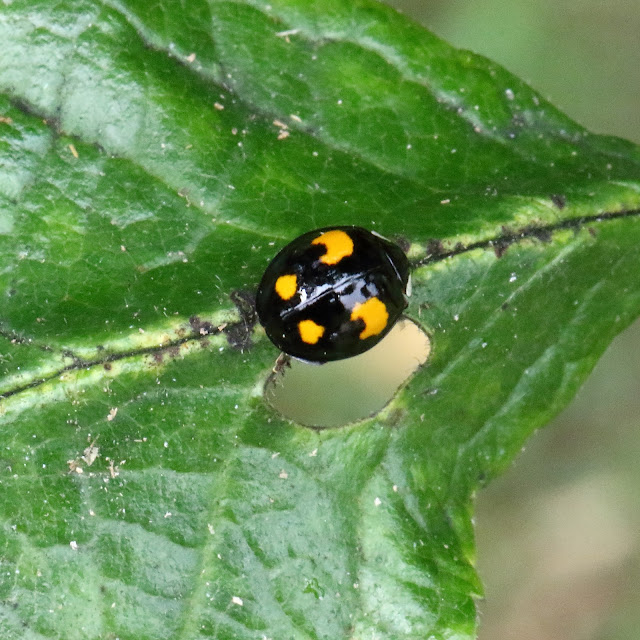9th July 2023 - Andy M has noticed a good number of ladybirds around at the moment, feasting on the equally prevalent greenfly and blackfly. These include not only the 'classic red with black spots' of the Two-spot Ladybird and Seven-spot Ladybird, but also the multitudinous variety of colours and spots of the Harlequin Ladybird. And all on just one plum tree - which now has hardly any greenfly!
Two-spot Ladybird
Seven-spot Ladybird
Seven-spot Ladybirds
Seven-spot Ladybird and a Harlequin (top right)
Harlequin - orange with 19 large black spots (succinea form)
Harlequin - orange with 19 rather smaller black spots (succinea form)
Harlequin - orange, with 17 black spots
Harlequin - orange, with 16 small black spots,
and a whiter pronotum (the part of body between the head and the wingcase)
Harlequin, orange with faint spots near the head - with a Lucerne Bug or Alfalfa Bug
Harlequin - orange with 19 very large black spots, some of which are fused.
Harlequin - red, with 19 large spots (succinea form)
Harlequin - red, with 19 smaller spots, and a whiter pronotum (succinea form)
Harlequin - orange and red, both with 19 spots
Harlequin - black and shiny, with 4 large orange spots (spectabilis form)
Harlequin - similarly black and shiny, with 4 large red spots (spectabilis form)
Harlequin - smaller, black and shiny, with 4 large orange spots (spectabilis form)
Harlequin - smaller, black and shiny, with 2 large orange spots (conspicua form)
Harlequin pupae - the transition form between larvae and adults
Apparently Harlequin ladybird colours are highly variable, with wing cases that can be pale yellow-orange, orange-red, red or black in colour, with between 0 and 18 spots, again highly variable. Most common in the UK are orangy-red with 15-21 spots, or black with 2 or 4 orange or red spots. The Pronotum can be white or cream with up to five spots which may fused to create an M pattern!


















No comments:
Post a Comment